How to use talent analytics to uncover hidden executive potential - 3 examples
Ott Niggulis
Hiring, especially hiring executives, is hard. And mistakes are expensive. Replacing a senior leader can cost up to 15 times their annual salary. Not to mention lost time and opportunity when the executive was not working at their full potential.
To remedy the situation, companies have been looking at ways to minimise bias and bring data and science into the decision-making process. With one solution in particular - talent analytics, standing out.
Talent analytics has become an increasingly important tool for businesses seeking to hire and retain top executives. By using data-driven approaches to identify and evaluate candidates, organisations can make more informed decisions about who to hire and how to develop their executive teams.
This article covers three concrete examples of using talent analytics to develop teams and make better executive hiring decisions. Examples included.
How to get started
First, it's crucial to clearly understand what you want to achieve and what specific questions you want to answer with your talent analytics efforts. This will help guide the data collection and analysis process and ensure that you focus on the right areas.
Next, collect high-quality data that is relevant to your goals. This might include data on employee performance, competencies, personality, skills, career paths, and other factors that can help you understand your workforce.
Once you have collected the data, you'll need to analyse it in a way that provides actionable insights. This might involve using tools like machine learning or statistical analysis to uncover trends and patterns in the data.
Finally, it's important to regularly review and update your talent analytics efforts to ensure that they meet your goals and provide value to your organisation. This can involve regularly reviewing the data and analysing it in new ways to uncover new insights and opportunities for improvement.
NB: The following use cases use employee/candidate competency, personality, and values assessment data and analysis. Assessment, data, and analysis that Wisnio provides.
Analysing team performance
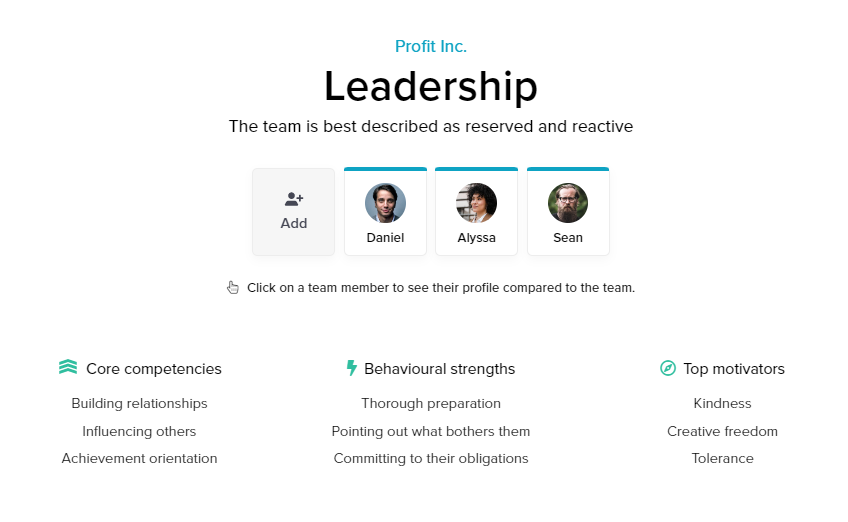
Example Team Profile from Wisnio
Everyone works in a team, and thereby collaboration skills and a good working relationship with teammates are imperative. Unfortunately, there isn't a simple way to assess team fit.
Here, talent analytics can help you by bringing in relevant data and analysis. In the context of team fit, that relevant data would be:
- Competencies - the knowledge, skills, and abilities required to perform a job successfully;
- Personality - an unbiased overview of an individual's personality traits and preferences;
- Values - the goals and ideals that transcend specific actions and situations.
To help you along the way, there are dozens, if not hundreds, of freely available competency libraries. The Big 5 personality traits survey is the most widely used and academically sound personality assessment framework around, and for values, you can use Schwartz's universal values model.
The trick is not so much the individual data points or assessments but how these come together and are analysed to produce something that is useful and usable.
At Wisnio, we use a combination of behavioural science and machine learning to bring data into understanding person and team fit. We use the aforementioned libraries, frameworks, and assessments as a base to analyse the data and compile Personal and Team Profiles.
This helps us predict how a team of people might perform and how any one person is likely to fit into a team of people.
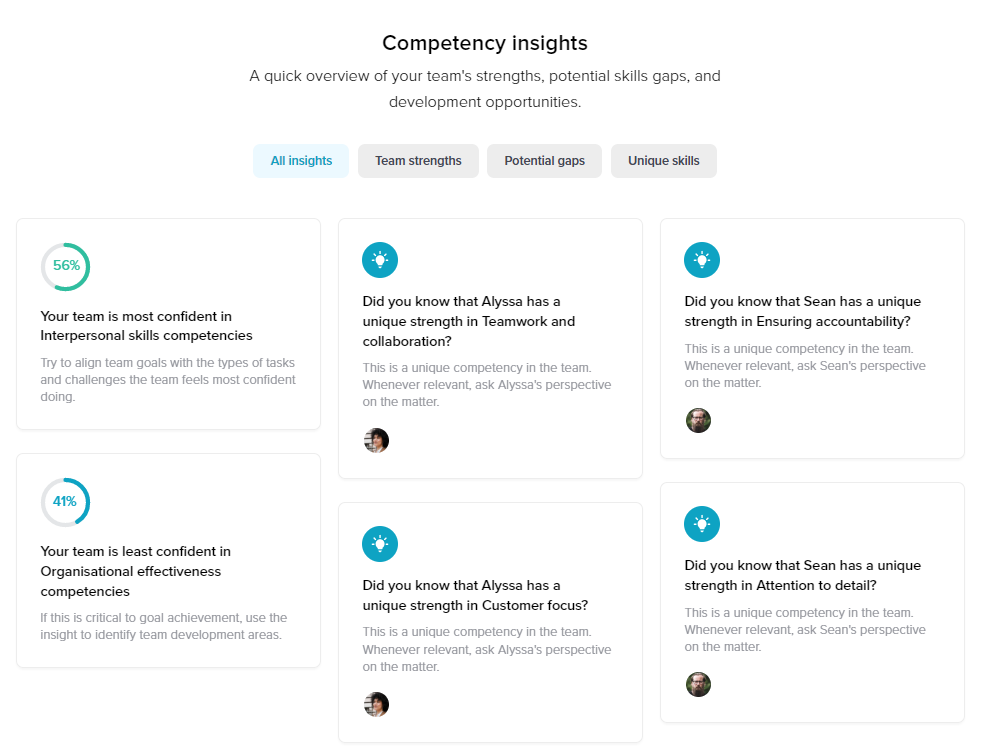
Example insights from a team on the Wisnio platform
Why does this matter?
A team made up exclusively of creative people may lack pragmatism, and a team of methodical people may lack room for flexibility in idea generation. Depending on the team goals and objectives, a diverse group may do better than one with high similarity levels in a single trait.
In general, people who are similar in values and different in everything else build a trusting relationship where conflict is easy to bear, and different approaches create synergy and agility.
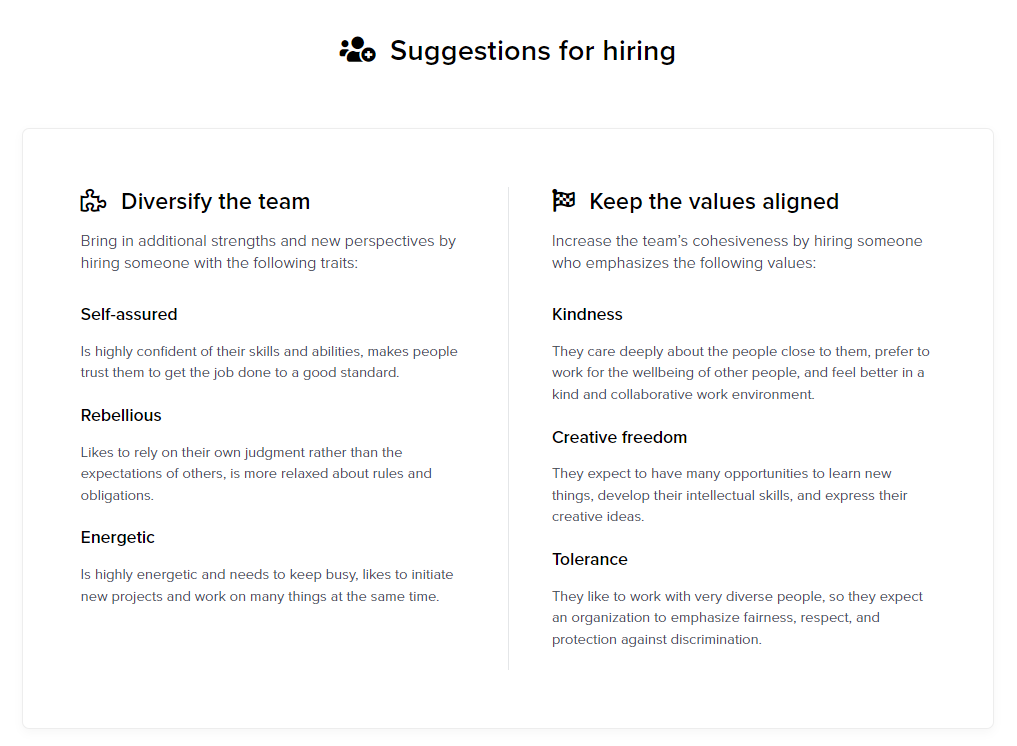
Example hiring suggestion based on real team talent data on the Wisnio platform
Understand candidate fit
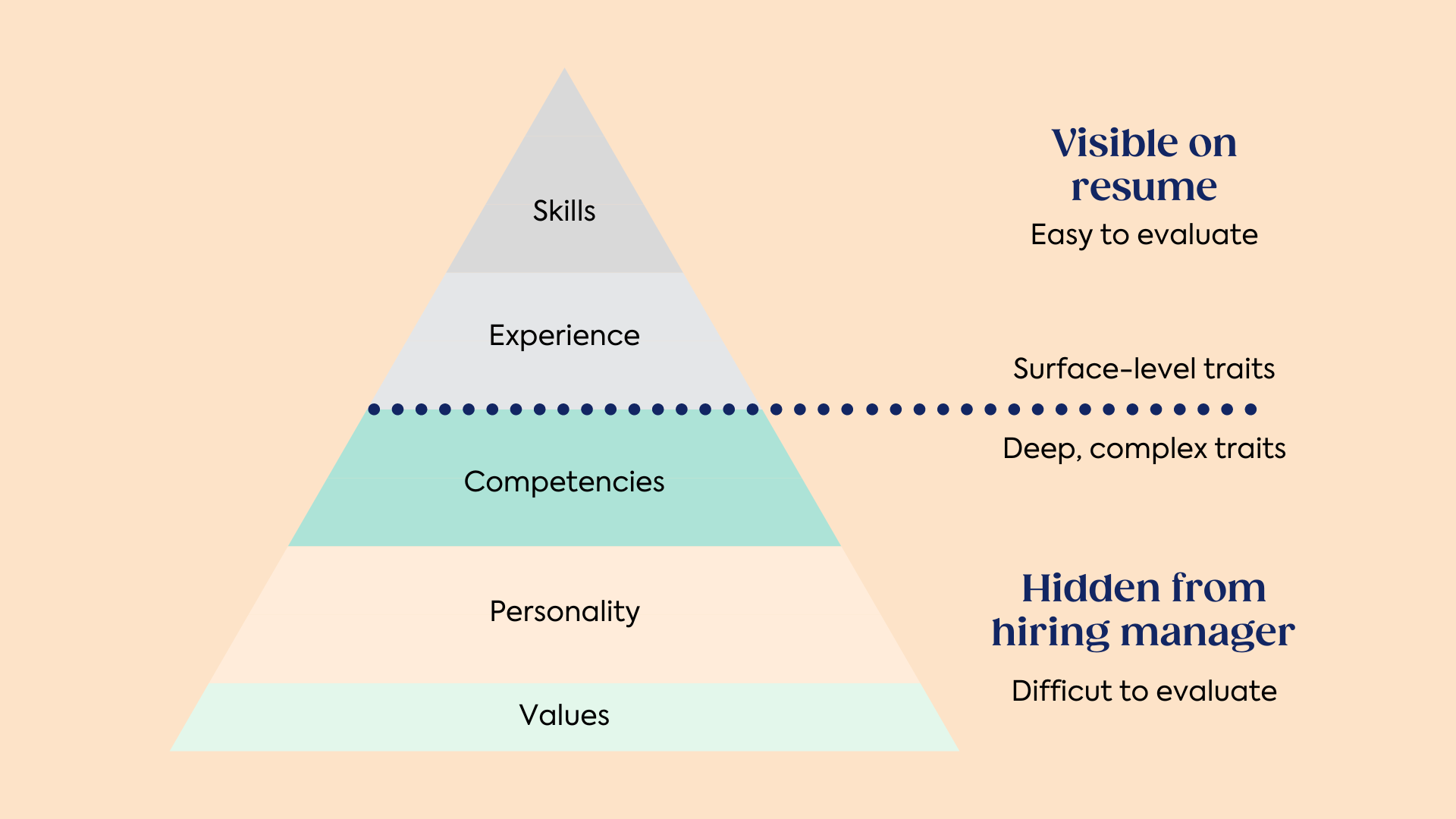
Understanding if a candidate has the required skills and experience is relatively easy to check. Still, understanding if and how a candidate's personality and individual characteristics fit into the existing team is a much more involved process. The data for it simply isn’t on their resume.
Yet, going beyond surface-level characteristics is crucial in helping executives better understand the candidates they interview and how well they will fit into the teams they'll be joining.
Behavioural insights and tools that visualise individual variability within a team can help hiring managers navigate the complexities of human preferences to make effective people decisions.
The talent data you need to assess possible team fit is the same as you would on team analysis - competencies, personality, and values. The difference comes in how you look at and intrepid the data.
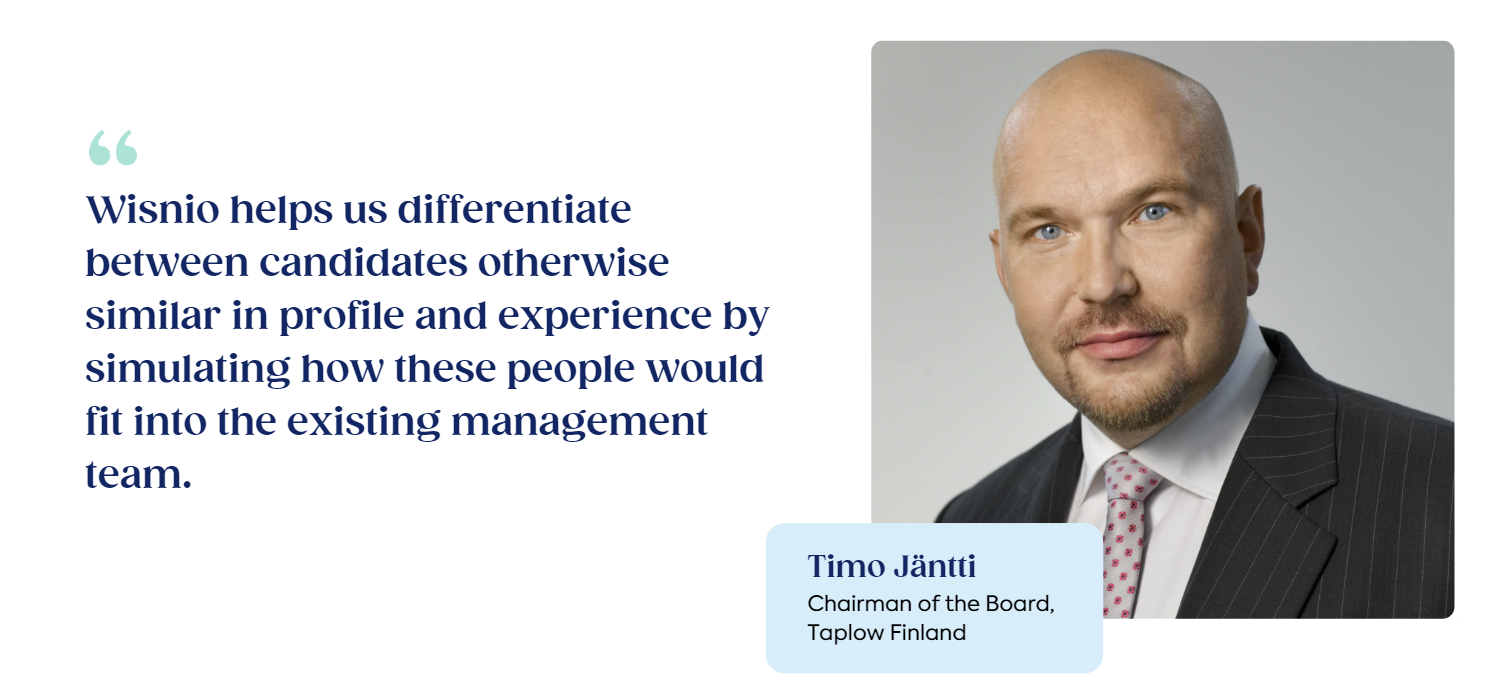
Adding a person to the team brings their skills, experiences, values, and personality traits into the mix, thereby changing the team behavioural composition.
As previously mentioned, in the team-building context, people who are similar in values and different in everything else build a trusting relationship.
In effect, you are looking for candidates who share the overall team (and company) values and bring diversity in competencies, skills, and personality.
For example, adding a person who is outgoing on the extraversion scale can bring energy and new ideas to a team that is primarily more reserved. Whereas adding another extravert to a team of extraverts can potentially bring more challenges:
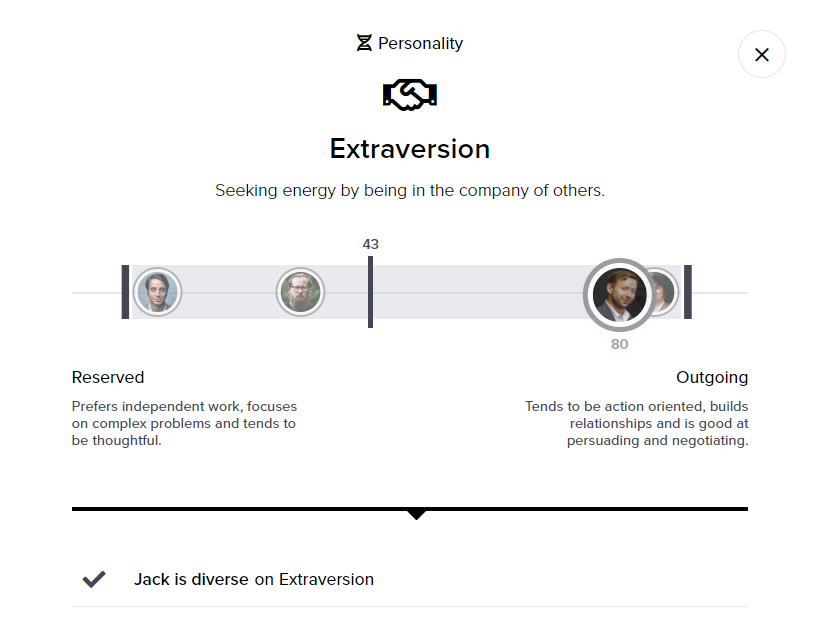
Example candidate and team personality analysis on the Wisnio platform.
The same story with competencies. And while it is true that certain competencies are needed for specific roles, as long as the candidates fulfil the required role-specific competencies, the more diverse the team, the better:
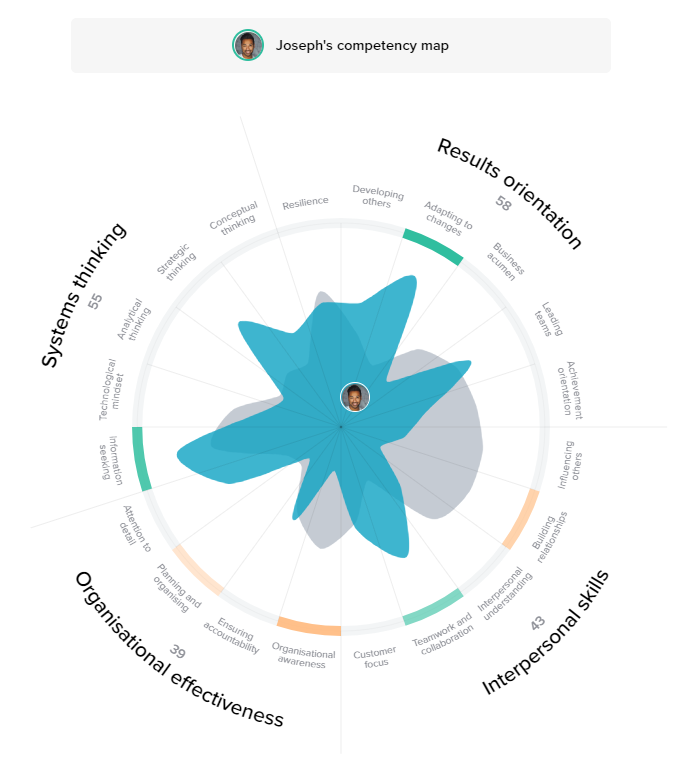
Example data from Wisnio: candidate competencies are highlighted in blue and the overall team competencies in grey.
Succession planning
Succession planning is the process of identifying and developing potential future leaders for an organisation. Success Profiles, also known as competency models, are used in this process to identify the skills, knowledge, experience, and differentiating competencies necessary for success in a particular leadership role.
These profiles help you identify potential candidates for leadership positions and develop the necessary skills and experiences they need to prepare for future leadership roles.
As good practice, each Success Profile has to include the following:
- Role-based key strategic objectives Key objectives provide a foundation for specifying the basic requirements and mapping the differentiating competencies of the role.
- Basic requirements and technical skills Critical professional skills, prior experience, formal education, credentials (where relevant), etc.
- Differentiating competencies These competencies specify generic leadership characteristics that differentiate superior performers from the average.
Things like basic requirements and technical skills needed to fulfil the strategic objectives are relatively easy to assess. Does the candidate have four years of experience in sales - yes or no? Has she worked at a financial institution - yes or no?
As with all hiring, things get more complicated once we consider the team aspect. People chosen to participate in the succession process will eventually join existing teams; thus, team analysis and candidate-team fit become increasingly more important.
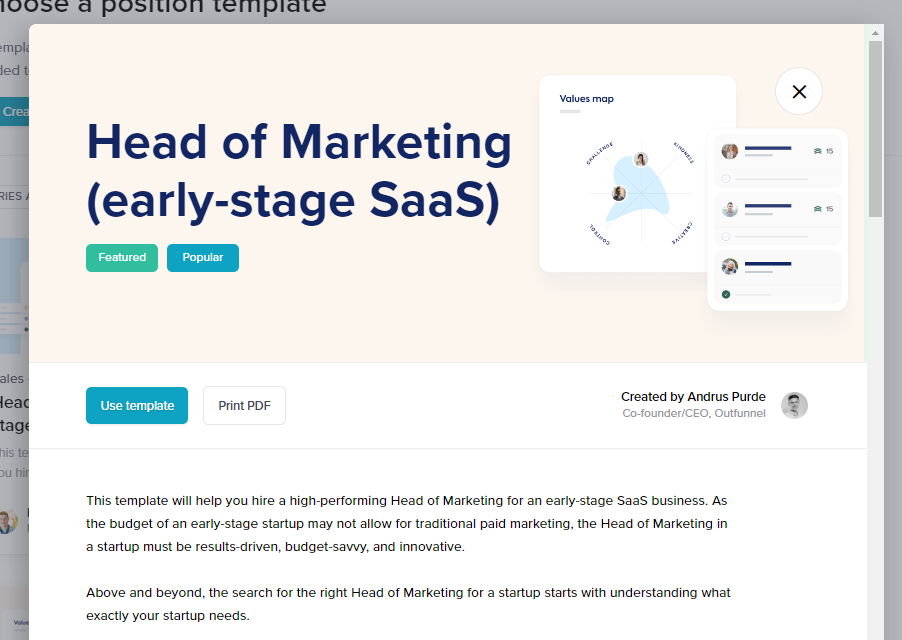
Example Success Profile/Hiring Template for a Head of Marketing position.
Succession is not static. It's a fluid process that constantly changes. As companies grow and change, so do their needs and expectations. This means re-evaluations to understand if the team in place can still meet the challenges head-on or if changes are needed. All of which change the composition of succession.
For more on succession planning and talent analytics, read our guide - A 5-step guide to business succession planning.
Conclusions
Talent analytics is a powerful tool for building and developing executive teams. Be it team analysis, understanding candidate fit, or building a succession planning process, talent analytics helps you make better-informed decisions, minimises bias, and brings data and science into team development and executive hiring.